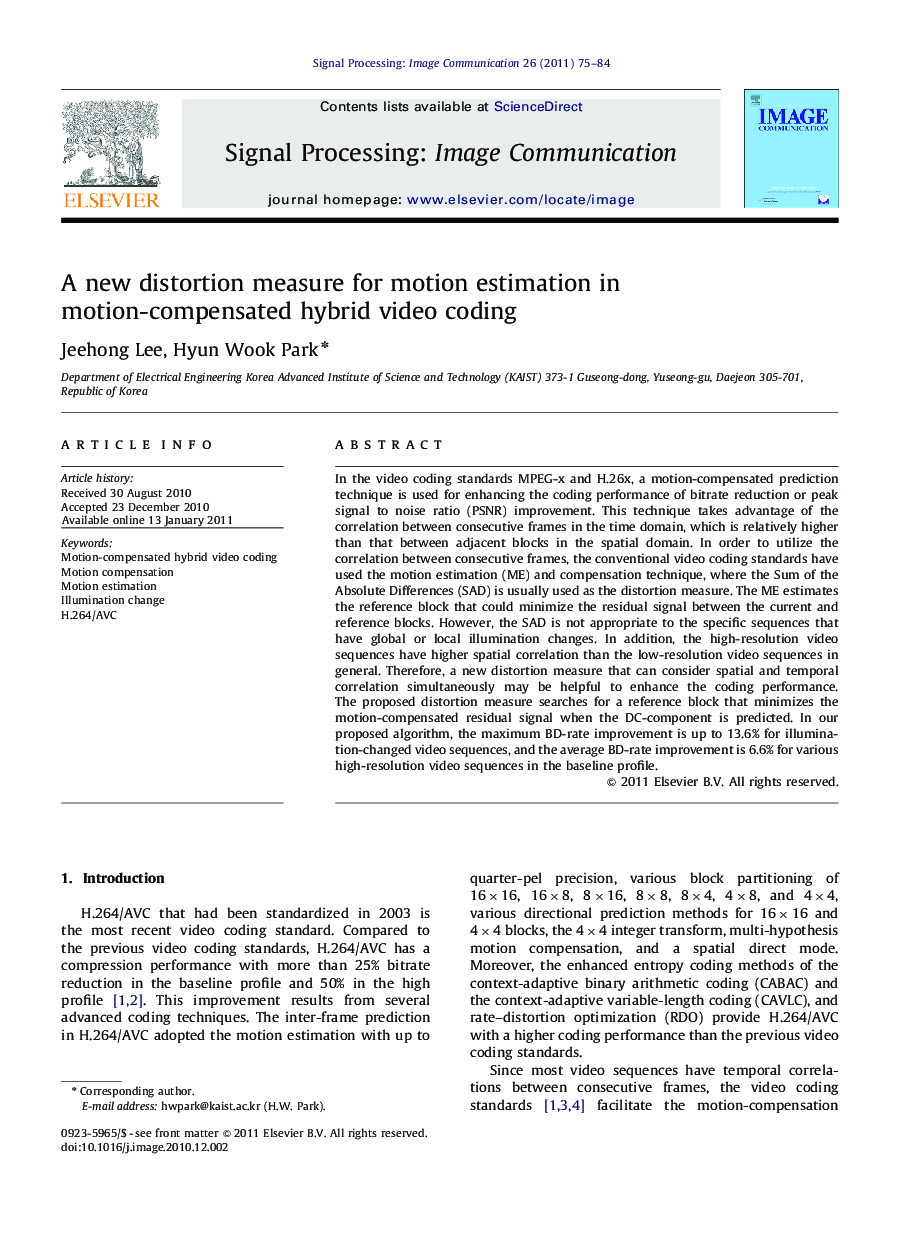| کد مقاله | کد نشریه | سال انتشار | مقاله انگلیسی | نسخه تمام متن |
|---|---|---|---|---|
| 538532 | 871098 | 2011 | 10 صفحه PDF | دانلود رایگان |

In the video coding standards MPEG-x and H.26x, a motion-compensated prediction technique is used for enhancing the coding performance of bitrate reduction or peak signal to noise ratio (PSNR) improvement. This technique takes advantage of the correlation between consecutive frames in the time domain, which is relatively higher than that between adjacent blocks in the spatial domain. In order to utilize the correlation between consecutive frames, the conventional video coding standards have used the motion estimation (ME) and compensation technique, where the Sum of the Absolute Differences (SAD) is usually used as the distortion measure. The ME estimates the reference block that could minimize the residual signal between the current and reference blocks. However, the SAD is not appropriate to the specific sequences that have global or local illumination changes. In addition, the high-resolution video sequences have higher spatial correlation than the low-resolution video sequences in general. Therefore, a new distortion measure that can consider spatial and temporal correlation simultaneously may be helpful to enhance the coding performance. The proposed distortion measure searches for a reference block that minimizes the motion-compensated residual signal when the DC-component is predicted. In our proposed algorithm, the maximum BD-rate improvement is up to 13.6% for illumination-changed video sequences, and the average BD-rate improvement is 6.6% for various high-resolution video sequences in the baseline profile.
Journal: Signal Processing: Image Communication - Volume 26, Issue 2, February 2011, Pages 75–84